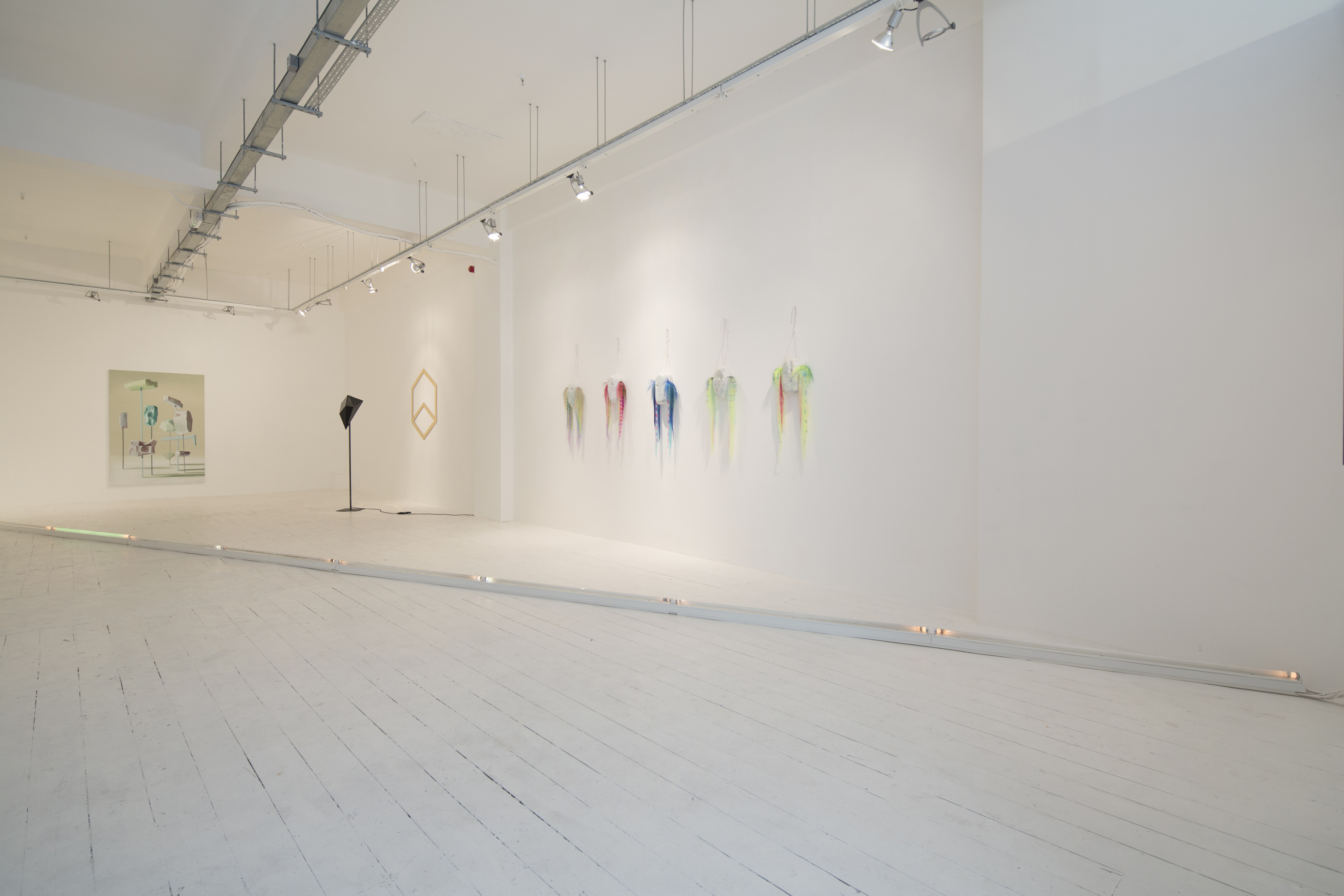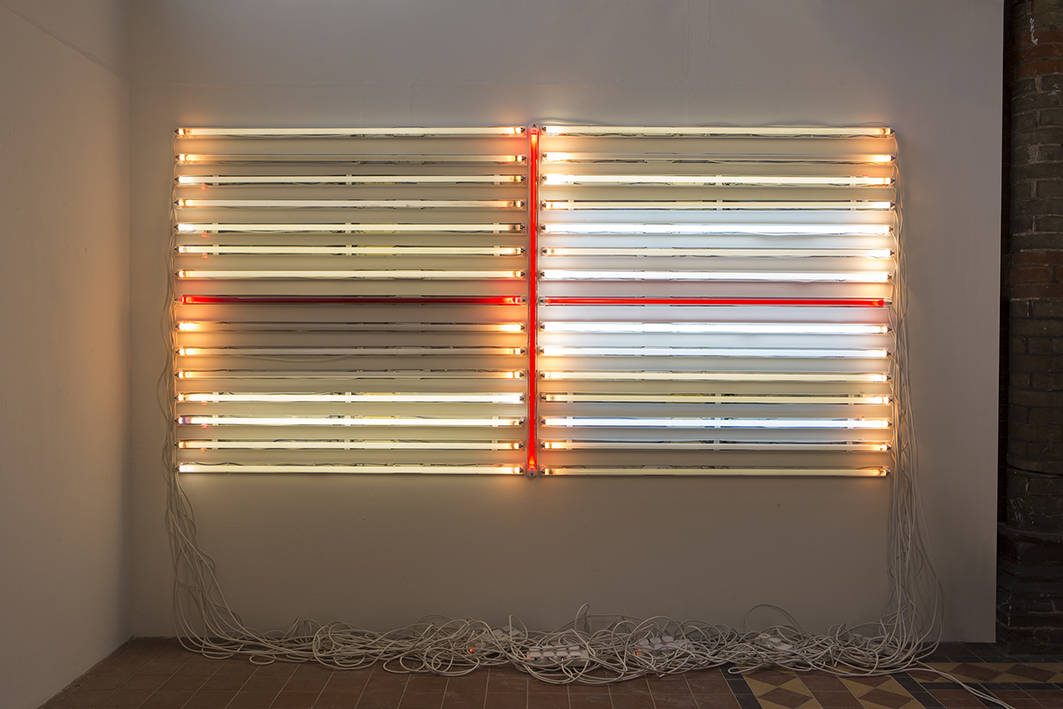William Mackrell
Interview by Caroline Elbaor
Published February 2017
-
Text taken from the Artist Statement:
Works present themselves as thoughts and gestures salvaged from the wreckage of saturated and distracted environments. Where the digital and minimal slickness of todays technologies run a muck with the use of the hand that try’s to claw back control over the beast of proliferated imagery, to end this multitude and multiple of imagery that spirals into an overload of being mesmerised. Hovering between existing and not being visible, fleeting, shifting, this sense of the temporary comes from his ingested self, growing up in London, where space and people are forever in flux, nothing stays reliable. This animality inside Mackrell leads these questions, looking from afar upon his surroundings and asking what are these strange humans doing? His stage is set in the language of photography but dismantled through turning photography into choreography; where dance, body, emotion, histories culminate in a rhythm that smacks with frustration, beats with repetition, endless waiting and revolving within the death of wasted time.
-
First things first (aka the boring, logistical basics): you have an American mother and English father, and you grew up in London. Do you think the specific area of London you lived in as a child/young adult had any bearing on your artistic practice?
The Camden area where I grew up was definitely an exciting place to be as a kid—music, markets and a quick bus route into central London were always at hand. Hampstead Heath was also very nearby and that huge other wilderness formed this escape from the city.
My parents definitely dominated my start with art. Both are academics from an art and history background, fashion history and history politics, so I was submerged in books, art magazines and their ideas from early on. Our neighbour next door used to call our flat the ‘book house’ because there was room for nothing else—every wall and table just stuffed full. My Dad often had his students over for drinks and Mum took me weekly to the National Gallery so I could copy paintings from the collection.
I still remember Dad taking me to Saatchi’s Boundary Road space in the early 90s and then when we went later to the Sensation show. It hit you in a way that couldn’t be ignored or remembered as just another exhibition.
How do you think being raised in not only in a city, but in this particular city of London influenced your desire to become an artist, and the work that you make?
Certainly, a metropolis like London affects your every breath. You become conditioned by the need to improvise, take chances, and ride your luck in order to negotiate the city’s all-consuming power. Now that I have more of a body of work, I can see how London’s fragmented patterns of temporality criss-cross through my work: there is always a strand of my London history in there.
Right. I noticed that, in addition to the theme of exhaustion, the impact of cities and/or urbanity seem prevalent across your work, and so it feels to me that this thread would naturally be inextricably linked to your personal experience of the city itself.
Definitely, especially in the work Gaps, glitches and speed bumps. It came about directly from sensing my body being funnelled and absorbed by the mechanics of bus travel in the city.
Breaking a line is assembled from salvaged fluorescent light fittings sourced from industrial workspaces and studios. These faulty blinking lights run on their own unpredictability and speak of the exhaustive and unstable flux of urbanisation and how that empowers people’s right to space and denies many people the very means just to exist.

Gaps glitches and speed bumps, 2015. Image courtesy A K Purkiss

Breaking A Line, PI Artworks, London, 2015. Image courtesy the artist.
Let’s talk strictly medium for a moment. You have worked in video, photography, sculpture, installation, and performance, so you have a formidable and wide-reaching background, to say the least. Why do you decide to experiment across such various forms of art-making, and do you think this hinders or informs mastery of one form alone?
A really good point and one that I still have more questions for than answers. The work does continually shift in a way that is rarely content with being held up in a single medium, but within this bundle of processes I would say all the works are loosely pinned together by Performance, beginning from the Body, and specifically, how we document ourselves with a camera, and then move inside these images.
By situating my work as at once the real and its copy, materials tip between being one medium and another, between being right there and not at all. I don’t think I feel hindered to master any one of these mediums, as each one tends to inform or replenish the other. There is no hierarchy there.
One thing I am hoping to do, though, in “Door for a day” is to strip away and completely readdress my approach to working with Performance. It’s been refreshing to be out of London for a while and meet and work with a lot of new people here in Vienna.
From these conversations, I am trying a new approach: to fall less into the trappings of audience spectacle, and rather bring together the performance works, objects, and props into a single installation—a kind of coming together that is also more of a self-portrait or diary of my time spent here in 2013 and returning in 2016, that in turn raises the question of there being a double self and a show within a show.

Convulsive Repulse, 2016. Image courtesy the artist.
There seems to be an ongoing sense of despair and/or exhaustion that permeates your work, regardless of medium. Is this intentional or a subject of interest to you, or does the tone naturally occur on its own as you work?
I think exhaustion is often there in the work but becoming less central than it used to be. I used to hang up my ideas on the benefits of exhaustion as a concept that all too easily terminates a work. It became a convenience to lean on. I think now I’m starting to value exhaustion as also the start of something new, a departure point.
Despair...I am not so sure I feel this is inherently in the work? In Breaking a line, the exhausted lights act as a memorial to the space they are shown in, but I hope they don’t feel despairing; I think they also have a magic that repels being pigeonholed in solely the socio-political debate they find themselves.
I think there is always a greater conversation to be teased out. For example, I scratch hair out of photographic images. It’s true that there is a conversation there about human fragility, and the act of cutting people out of a picture could quickly equal a sense of despair, but it is also as much about me feeling like an ant in the back of someone’s hair that made me start these works.
Usually, I find logic as a form of ‘reasoning and answering’ ends up becoming a point to then head off in another direction.
I can sense a strong element in your work regarding current social and political standings. How much of a role would you say a desire to comment on contemporary issues plays in your practice?
I don’t so much desire to confront my feelings on the social and political; it’s more that if I don’t, I can’t stop thinking about them, and then the ideas turn putrid in a swirling headache. Particularly what we can see in the last two years is such a severe decline in how humans behave towards each other (at least as viewed through the deluge of global troubles) that working with the political had to come about in my work and has done really without forcing any agenda.
Would you say you feel art is an effective channel in which to implement change or spread an ideal?
I would like to think that art can be an effective channel, but too often it becomes snared in the very political framework it tries to address. So working with the political also becomes, as I see it, like a kind of Capoeira dance.
I am learning to navigate this territory—trying not to become just another meal for the political beast. The political and social swamp of despair is in large part spread through a person’s ability to manipulate and dominate another within a very unhealthy backdrop of history’s easiest card to roll out: Fear. Within this psychological arena I think art can be a useful platform of its own psycho agenda to both confront but also comfort a wounded mind.

Installation View: NX Projects, London, 2016. Image courtesy the artist

Installation View: NX Projects, London, 2016. Image courtesy the artist
-
William Mackrell (b.1983, London) lives and works in London. Recent solo exhibitions include Door for a day, Krinzinger Projekte, Vienna, Steam Horses, Ryder Projects London (2015), FLOOR, MOCA London (2012). Selected group shows include Heaven is a place where nothing ever happens, Pi Artworks London, Jerwood Drawing Prize 2015, Jerwood Space London, PerForma FOLD Gallery, London, Drawing Biennial 2015, Drawing Room London (2015), N(l)ight Cuadro Gallery, Dubai, The Trouble With Painting Today, Pump House Gallery London (2014), Cover Up, Krinzinger Projekte, Vienna (2013), Infinite Jest, Dundee Contemporary Arts Scotland (2012), Colour LIGHT Time, Two Rooms Gallery Auckland (2011) and Innovators 3 Linden Centre for Contemporary Arts Melbourne (2010). His works have been exhibited at Frieze London, Art Dubai and Miami Basel with Galerie Krinzinger and at Manchester Contemporary and London Art Fair with Ryder Projects, London. Works held in public collections include Albright Knox Art Gallery, Buffalo; Krinzinger Collection, Vienna; Goldsmiths College Collection, London.
Mackrell studied BA Painting at Chelsea College of Art (2005) and MFA Fine Art at Goldsmiths College, London (2016). He recently completed a residency at Krinzinger Projekte, Galerie Krinzinger, Vienna and is currently in residence at the Florence Trust, London (2016-17).
He received the Purchase Prize from Goldsmiths College, London (2016) for his MFA degree show and will be included in a global survey on the use of text in art, ‘The book of the word’, published by Thames & Hudson (2018). His forthcoming solo exhibition opens at the Ryder Projects, London in April (2017).
-
If you like this why not read our interview with John Lawrence
-
© 2013 - 2018 YAC | Young Artists in Conversation ALL RIGHTS RESERVED